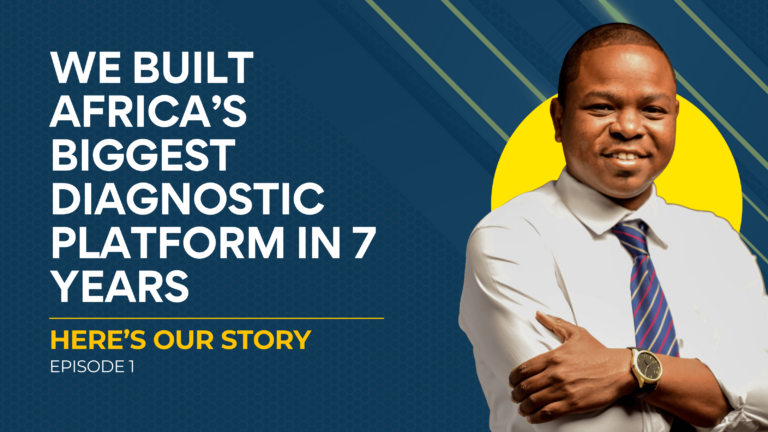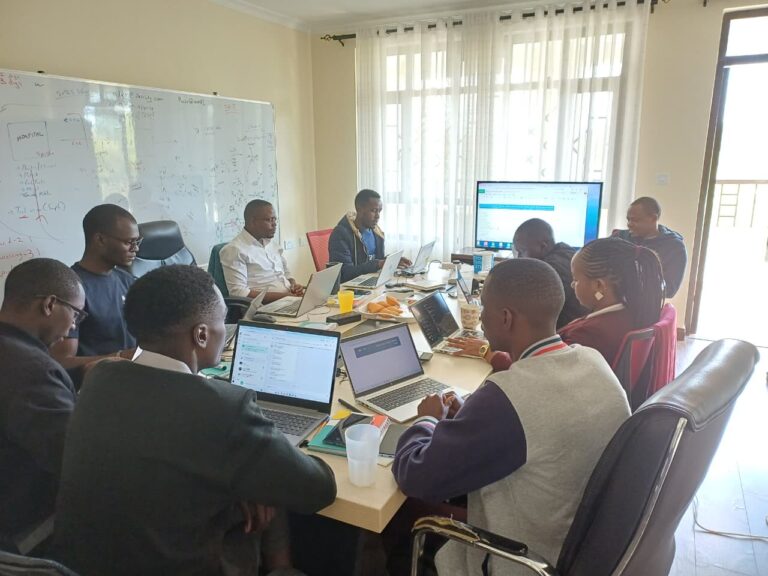
Drug Access Programs Need Diagnostic Coordination to Succeed
Pharmaceutical access programmes (PAPs) are powerful lifelines that ensure patients, especially in low- and middle-income countries, can obtain life-saving medicines that would otherwise be out of reach due to cost, distribution challenges, or weak health systems. They represent hope and are proof that global collaboration can bridge the gap between discovery and delivery.
PAPs often involve partnerships between governments, NGOs, and pharmaceutical companies to subsidise treatment, streamline supply chains, and provide affordable care. Yet their success is heavily dependent on timely and accurate diagnoses to help identify the right patients for the programmes.
Weak or broken diagnostic systems mean that deserving patients pile up in the diagnostic stage, mixed in with others, waiting for their diagnosis while their disease continues to progress. The sad reality is that late diagnoses or misdiagnoses render access programmes tragically ineffective. Free or subsidised medicine is of limited use to a stage 3 or stage 4 cancer patient.
Susan’s story is illustrative of these challenges. A single mother of five living in one of Kenya’s poorest slums, Susan has been a food vendor in Mathare for years. She earns barely enough to feed her two children, but she has managed to do well for herself despite the difficulties. Two months ago, she was diagnosed with stage 3 breast cancer, a devastating diagnosis made worse by the fact that it took 8 months of hospital visits and fundraising. The once energetic and cheerful 45-year-old is now anxious and depressed. Clutching a prescription of drugs she cannot afford, she tells us that she is torn between the choice of spending her remaining energy on herself or on her three remaining children, who rely solely on her. It is a cruel choice that no mother should have to make.
Susan’s story unfolds against the backdrop of a continent at a critical crossroad. Africa stands as home to some of the world’s fastest-growing economies, with many countries transitioning into middle-income status. This economic transformation has brought with it a complex epidemiological shift that is fundamentally reshaping the continent’s health landscape. Unlike other regions that have experienced sequential disease transitions, Africa faces a unique dual burden, where traditional challenges of infectious diseases persist alongside a rapidly rising tide of non-communicable diseases (NCDs).
The numbers paint a stark, but sobering picture. Sub-Saharan Africa bears 20% of the global disease burden. One study in The Lancet shows that while life expectancy in Africa has more than doubled since 1950, more than 4.5 million Africans die annually from communicable diseases like malaria, AIDS and tuberculosis. Furthermore, the study notes that deaths from non-communicable diseases like cancer and cardiovascular diseases have grown from 2.1 million in 1990 to 3.8 million at the time of the survey.
Yet, access to essential medicines remains critically inadequate. According to the World Health Organisation, Africa faces recurring problems of shortages of priority health products, with 50% of the African population lacking access to essential medicines, particularly in sub-Saharan Africa. This represents twice the average number of people worldwide who lack access to medications, and falls far short of the 80% benchmark for the acceptable availability of critical medicines in member countries.
The Promise and Reality of Pharmaceutical Access Programs
Major pharmaceutical companies, including Novartis and AstraZeneca, have achieved notable successes through ambitious access programs that offer medications at reduced costs or free to patients in the most vulnerable communities. These communities are typically the last to get access to such medicines due to their inaccessibility.
The scale and impact of these efforts have been substantial. Pharmaceutical companies collectively operate hundreds of access programs globally, with significant focus on African markets given the continent’s high disease burden and healthcare needs. These programs have delivered millions of treatment courses for conditions ranging from HIV/AIDS and tuberculosis to cancer and cardiovascular disease.
Systemic Challenges Facing Pharmaceutical Access Programs
Despite their successes, pharmaceutical companies operating access programs in Africa have encountered several complex challenges that stem from broader healthcare system limitations rather than deficiencies in program design or execution.
Patient identification has emerged as a significant operational challenge. While pharmaceutical companies excel at developing treatment protocols and managing complex supply chains, they have experienced difficulties with patient identification due to Africa’s limited diagnostic infrastructure. Many African countries rely on just a few hundred pathologists to diagnose critical conditions affecting millions of citizens, with some countries lacking even a single pathologist. This diagnostic capacity gap creates challenges for programs that require accurate patient screening and monitoring.
Africa’s fragmented diagnostic ecosystem presents additional operational complexities, with standardisation, communication, and coordination issues that limit effective laboratory medicine practice. This fragmentation affects data availability and quality, making it challenging for pharmaceutical companies to evaluate program effectiveness or conduct meaningful clinical trials, as is the case in other global markets.
Pharmaceutical companies have also experienced challenges with scaling PAPs across Africa’s diverse regulatory landscape. While pharmaceutical companies possess deep expertise in navigating complex international regulatory environments, Africa’s fragmented regulatory systems present unique complexities. For example, a study in PLOS Medicine notes that some African countries have weak or non-existent regulatory systems. Furthermore, African regulatory agencies face a complex web of challenges, including weak regulatory frameworks, staff shortages, poor infrastructure, a lack of harmonisation across 55 countries leading to duplicative processes, limited regional collaboration, and inadequate oversight capacity to manage globalised pharmaceutical supply chains. These challenges present cost and time implications to pharmaceutical companies and limit access to patients with critical conditions.
Using Local Partnerships for Global Impact
Pharmaceutical companies seeking to ensure their PAPs achieve meaningful impact must fundamentally reimagine their approach to African markets. Success requires partnering with local service providers who can verify patient information and diagnoses while compiling comprehensive datasets about disease burden and treatment responses. This would enable more informed decisions about which conditions to target, how to structure pricing for PAPs, and where to focus future research and development efforts.
Similarly, companies must embed their programs within locally owned healthcare infrastructure to ensure sustainability, holistic impact, and community ownership. Having reliable local partners allows pharmaceutical companies to focus on what they do best—developing innovative treatments and managing complex global supply chains—while leveraging local expertise for patient identification, regulatory navigation, and community engagement.
Recognising these challenges, a new generation of African health-tech companies is building the infrastructure that pharmaceutical companies need to address systemic issues that have long plagued access programs. These organisations understand local contexts, regulatory environments, and healthcare delivery challenges in ways that international companies cannot replicate through external partnerships alone.
A Model for Transformation
The Pathology Network (TPN) exemplifies this new generation of healthcare infrastructure providers. TPN operates as a community of accredited pathologists, regulated laboratories, and impactful healthcare institutions united by common medical values and standards. The organisation seeks to broaden access to laboratory medicine, ensuring patients like Susan receive the treatment they need wherever they need it.
TPN builds software to power the diagnostic ecosystem through its Spes360 platform—the first scalable, cloud-based, continent-wide software platform designed to ensure effective inter-institutional collaboration. Built by local African pathologists who understand the unique challenges of practising laboratory medicine across diverse African contexts, the platform provides modules that pharmaceutical companies can utilise to systematically screen populations, identify treatment candidates, and provide ongoing diagnostic support in real-time.
The data provided by such modules directly address patient monitoring and identification challenges that frequently undermine PAP effectiveness. More importantly, TPN provides access to local African diagnostic experts and serves as a vital bridge connecting pharmaceutical companies, healthcare institutions, and regulatory bodies across diverse African markets. This enables pharmaceutical companies to leverage local expertise for accurate disease diagnosis, effective treatment response monitoring, and successful navigation of complex regulatory environments across Africa.
The Path Forward
The promise of using local experts cannot be overstated. Companies that embed their initiatives within locally owned healthcare systems can develop sustainable programs while building essential community trust. This approach ensures long-term programmatic success across diverse African markets by aligning international pharmaceutical capabilities with local healthcare delivery expertise.
Back in Mathare, Susan remains hopeful that assistance will come. Her cancer, ultimately treatable, progresses at a slow pace, but the window for effective intervention continues to narrow. The medications exist, and PAPs could provide them at reduced cost, but the tragic gap in diagnostic and delivery infrastructure limits her access to affordable interventions.
The promise of integrated diagnostic networks extends far beyond individual cases like Susan’s. These systems could identify the next Susan earlier in her healthcare journey, when her chances of survival would be dramatically higher, while ensuring she receives appropriate care through established treatment protocols. The solution already exists. The infrastructure to save lives like Susan’s is being built across Africa by organisations like The Pathology Network and similar health-tech innovators.
As Africa continues its transition toward middle-income status while managing its complex epidemiological shift, the continent’s pharmaceutical access challenge demands more than well-intentioned programs; it requires systematic partnerships that leverage local expertise while enabling global pharmaceutical companies to focus on their core strengths. The infrastructure necessary for this transformation is emerging; what remains is the critical need to scale these solutions rapidly enough to match the pace of Africa’s economic growth and epidemiological transition.

